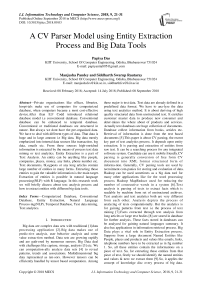A CV parser model using entity extraction process and big data tools
Автор: Papiya Das, Manjusha Pandey, Siddharth Swarup Rautaray
Журнал: International Journal of Information Technology and Computer Science @ijitcs
Статья в выпуске: 9 Vol. 10, 2018 года.
Бесплатный доступ
Private organizations like offices, libraries, hospi-tals make use of computers for computerized database, when computers became a most cost-effective device.After than E.F Codd introduced relational database model i.e conventional database. Conventional database can be enhanced to temporal database. Conventional or traditional databases are structured in nature. But always we dont have the pre-organized data. We have to deal with different types of data. That data is huge and in large amount i.e Big data. Big data mostly emphasized into internal data sources like transaction, log data, emails etc. From these sources high-enriched information is extracted by the means of process text data mining or text analytics. Entity Extraction is a part of Text Analysis. An entity can be anything like people, companies, places, money, any links, phone number etc. Text documents, bLogposts or any long articles contain large number of entities in many forms. Extracting those entities to gain the valuable information is the main target. Extraction of entities is possible in natural language processing(NLP) with R language. In this research work we will briefly discuss about text analysis process and how to extract entities with different big data tools.
Computerized Database, Conventional Database, Entity Extraction, Natural Language Process-ing(NLP), Temporal Database, Text data mining, Text analytics
Короткий адрес: https://sciup.org/15016294
IDR: 15016294 | DOI: 10.5815/ijitcs.2018.09.03
Текст научной статьи A CV parser model using entity extraction process and big data tools
Published Online September 2018 in MECS DOI: 10.5815/ijitcs.2018.09.03
-
II. Process of Entity Extraction
Entity extraction also called Entity Name Extraction or named entity recognition(NER). NER is subtask of information extraction process to identify the named entities in text into different types of facts like name of a per-son, organizations, values etc. It helps in transformation of un-structured text to structured text [10].
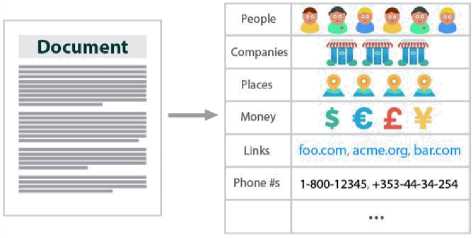
Fig.1. Entity Extraction Process Example

Who?
Intentions?
Buy or quit?
How many?
Positive or negative?
Which competitors?
What industry?
Where?
Compared to?
Evidence?
Fig.2. Extraction of named Entity
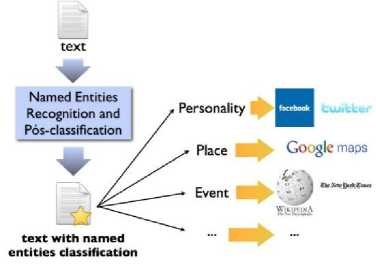
Fig.3. Process of Entity Extraction
-
III. Working of Entity Extraction
Extraction rules are based on Semantic technologies. These technologies sometimes have to face some language issues for correctly identifying the entities. It will be easy for human being to distinguish names, places, organizations etc. But in case of machines, it become more complex because of ambiguous nature of grammar. Keywords based system are unable to differentiate between every possible meanings of a word. As example ”Orange” can be a name of a fruit, any color or name of any country. Semantic technologies of understanding context [12] in text includes:
Entity Relation Extraction: This connects relationships shared between different entities. It also reveals any connec-tions or events shared among these entities. The main aspect is it also establishes the indirect relationships amongst indirect connections.
Linking: It identifies links of any entities in a cor-pus. Example: linking identify any place in the corpus and link that place on the map.
Fact Extraction: It helps in extracting all informations asso-ciated with that entity.
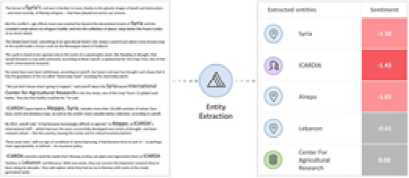
Fig.4. Working of Entity Extraction
-
IV. Related Works
inconsistent data. VELOCITY [14] is the rate at which data is generating day by day. Fig number 5 depicts the 4 V’s. It is a tremendous and extensive method.

Fig.5. 4 V’s of Big Data
Table 1. Data Measurement Charts With Its Units And Values
|
Data measuring units |
Values |
|
Bit |
0,1 |
|
Byte |
8 bits |
|
Kilobyte |
10001bytes |
|
Megabyte |
10002bytes |
|
Gigabyte |
10003bytes |
|
Terabyte |
10004bytes |
|
Petabyte |
10005bytes |
|
Exabyte |
10006bytes |
|
Zettabyte |
10007bytes |
|
Yottabyte |
10008bytes |
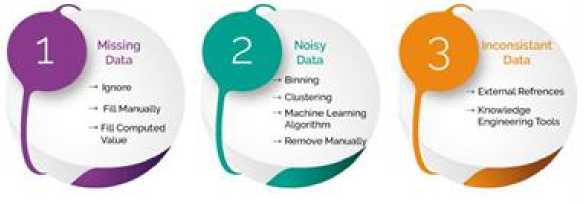
Fig.6. Text mining Process
-
1) Text Analytics Techniques:
Text Analytics is also a [15] predictive analysis method. When the training data sets or texts comes, user categorized the texts into different portions or texts for classification. This classification process includes the text preprocessing steps. Steps are cleaning, tokenization, POS tagging, transformation, evaluation, Selection of attributes, insights identification etc. When the raw text or raw data comes, statistical or linguistic techniques applied for the text analysis. Then the texts according to their taxonomical behavior is categorized. Then the concepts and patterns is extracted for getting relationships in large amounts of text. After that accuracy level of the model is being checked. When there is unstructured, ambiguous data which is difficult to process, text preprocessing method is used as shown in fig 5.
Preprocessing includes different steps as in fig 6.First step is text cleaning which involves removal of unwanted or inconsistent data. Example: ads in webpages, popups coming in websites etc. Tokenization is breaking of textual contents into words, symbols named as tokens. Part of Speech Tagging includes transformation, selection, mining, evaluation. After the tokenization process tagging assigned to each token. Text transformation is also attribute generation. Its main approaches are Bag of words and Vector Space. Feature selection is also Attribute Selection. Main aspect of this method is to remove redundant and irrelevant features.
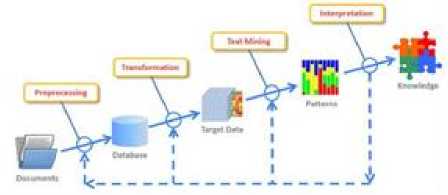
Fig.7. Text preprocessing method
-
2) Applications of Text Analytics:
-
i) Banking and Securities: Applications of Big data in banking is very crucial. The SEC (Securities Exchange Commission) use big data for monitoring stock and financial market [16].
-
ii) Communications, Media and Entertainment: By this we collect and an analyze consumer insights. It tries to understand patterns of real time contents of data.
-
iii) Health care Providers: Hospitals uses data from mobile [17] for millions of patients for detecting several lab tests.
-
iv) Education: Big universities and institutions uses big data tools for managing student information according to a specific key or primary key i.e roll number. Tools may be SQL method.
-
v) Manufacturing and Natural Resources: In this approach big data use predictive modelling for integrating large amounts of data. The types of data may vary like it can be graphical data [18],
text data or may be temporal data.
-
vi) Government: Government uses big data in various fields like in SSA(Social Security Administration) & FDA(The Food and Drug Administration ).
-
vii) Insurance: In the insurance industry they predicts the customers insight and predictive behaviour from different social media, GPS enabled device, CCTV footage [19] etc.
-
viii) Finance: Big Data uses technical Analysis in the Financial market.
-
ix) Internet of Things: Big data and IOT works concur-rently. The targetted data is extracted from the IoT device for preprocessing and it provides mapping of device interconnectivity.
-
x) Sports: Big data uses prediction modelling in sport sensors for performance improvement of players. It also can predict winners in a match using Big Data Analytics.
Healthcare and life
Banking. Retail and
Financial Consumer
Services, and packaged
Insurance goods (CFG)
Text Analytics
Travel and Hospitality
HrghTech and
Telecommunic
Media and Entertainment
Fig.8. Text Analytics Applications
Whenever client companies receives resumes with their requirements it should have some ranking. Database of system having bulk of resumes. But companies also sometimes tried to connect with candidate’s with their social profiles like Github, Linkedin for more information [20].
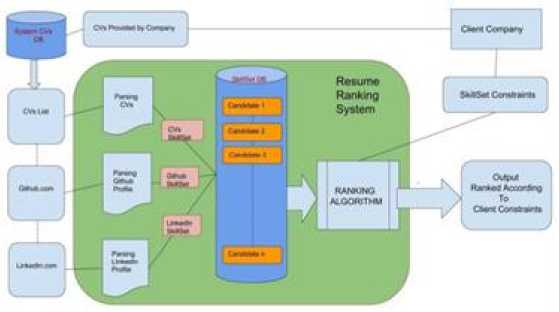
Fig.9. General architecture of resume parsing system
Bichitra Mandal et.al[7] discussed use of HDFS(Hadoop Distributed File System ) with Map Reduced model for counting of number of consecutive words in Word processor. Hadoop is based on a programming paradigm called Map Reduce. It consists of a single master job tracker and one [6] slave task tracker per group node. The master is accountable for setting up the jobs to the slaves, screen them and re-execute them when the assignment fails. The slaves implement the everyday jobs as aimed by the master. The Map Reduce framework 10 works on key-value pairs and generates a set of key-value pairs as output.
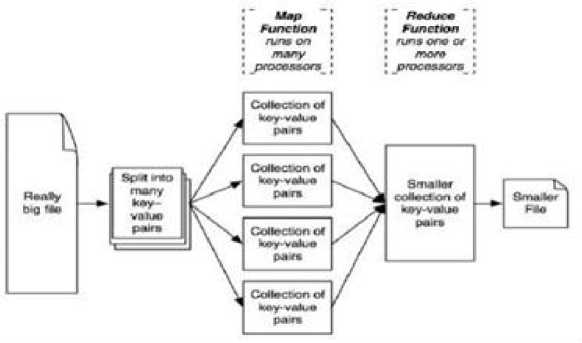
Fig.10. MapReduce Framework
-
3) Architecture for Word Processing using Hadoop Map Reduce:
A MapReduce job separates the key data set into self sufficient chunks which are later on refined by the map tasks coordinately. The input and output of the work are [6] stored mutually in a file-system. It handles the scheduling tasks, monitors them and enforces the unsuccessful tasks. For example: word processing using Word Count. In fig the file system is Map Reduced for efficient word processing [6] using Word Count. It reads text files and counts the number of occurrences of each word in a given input set. The mapper function takes each line as input and divides it into words, producing a key-value pair of each word. The output produced by the [6]mapper is then shuffled and sorted by value as per the occurrences of each word, which then becomes input to the reducer. Then the reducer sums the counts of every word and generates a single key-value with the word. The reducer also plays the role of a combiner on the map outputs. It minimizes the quantity of data sent by associating each word into a distinct record. HDFS stores both the input and output of the file system. If the input is not present in HDFS and is in local file system then the data is first copied into HDFS. The mapper processes one line at a time. It separates the lines into tokens and then produces a key-value pair of each word. The output of each map is then shuffled and sorted and approved by the combiner, which is also known as Reducer. The Reducer sum up the values for each key and the total output is generated as shown in fig 11.
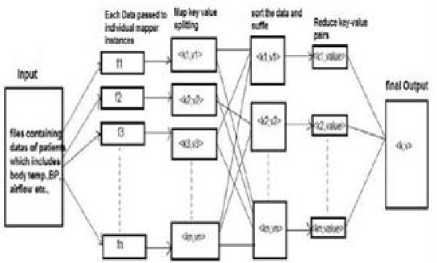
Fig.11. Word processing using hadoop MapReduced with one input System
Authors Pooja et al. [21] discussed the resume parsing application for transforming the resumes uploaded in different formats i.e doc, docx, pdf, text etc. The system transforms the uploaded resume into the desired format with only necessary details of candidates. The resume parser application is 24x7 available and easily accessible. This application finds out el-igible candidates for the given job position on the basis of uploaded resume. The authors describe the differences between the existing system and their proposed system. In existing system candidate has to manually fill the job profile. Although this process is lengthy and time consuming. Digitized resume format is not given, job recruiter has to check every parameters for searching the eligible candidate. So, a system is developed shown in fig 12,where candidate only upload their resume and details will automatically fetched [22].
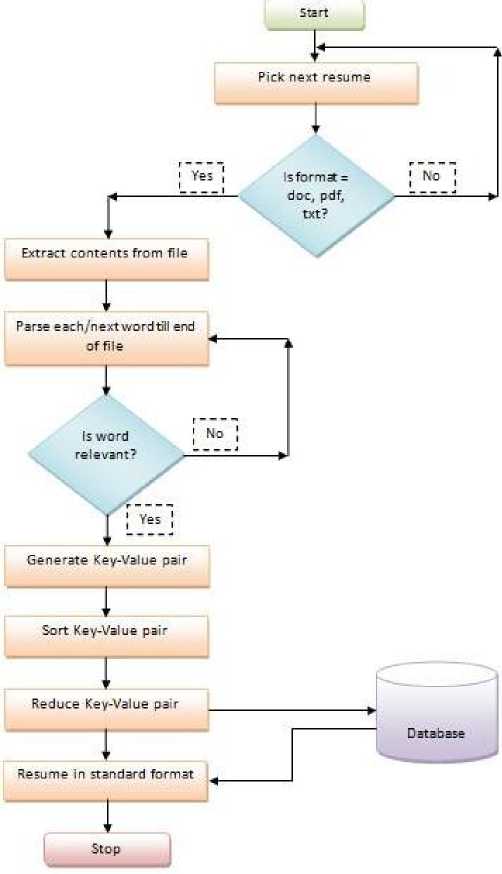
Fig.12. Flowchart of proposed resume system
Metadata: This approach works in a fixed domain value format. Data will be stored in database table. The fixed values may be skills, gender, education etc. Parser will match with resume, and when match found key-value pair is generated.
Hybrid Approach: It is the combination of other two approaches i.e metadata and NLP approach. This approach uses these two for extracting details.
The authors [22] researched on Chinese resume document analysis. It is based on pattern matching, feed-back control algorithms etc. This parsing is on semi-structured document. And the system was developed for china HR, which is biggest recruitment website. They used the resume parsing method for information retrieval on semi-structured Chinese document as shown in fig 13.
Уник: Zhang Wu jl
Geedet пик Ba th dal» l$SM\fcble IJ8IIJJ””
E тай pan^zhixiafif ■ • 3gm«el com Addre«: В1ФТ 29* H»d^i Dm№ci
2006 9 - dou
I ah мчм Ba jin# l ona^m of ром> and Ь-ксеевюпкаГкии
School School of Тс1ес<»пжпжасае»ап
Мл jut iceaputet »|^Ь<а1м.«1 D*gi#* nu*tri
" or к E tp# ri# все
Tool С 1мцпи#е Soece InMjhr Rational punfy Rational pnrcovmg'e CVmt Project Expetieece
H*#iMoHeMarketsSyetwmTime 2007 9 200t-2
lf#m tl#treiptioQ The txxirta и drMpnrd fee KrBci mobile соормп You can handle kmdt of iMtuncrie* the call мя<еае!ка1Ь sMs (bv sMs pUefcwsi I tn the mobile tremmal R«'i|xmiibilt<* I mu si charge of dc\rk>jnitj Ptoxv Server Agination s«\et SmsuLnicm
Fig.13. Chinese resume sample
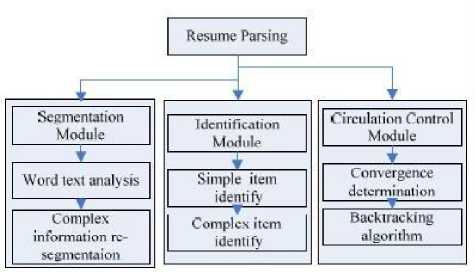
Fig.14. Methods arrangement of chinese resume parser system
Then, Accuracy= N1/N.
They proved that, high accuracy is gained when information extraction was based on regular expressions and text automatic classification. And in complex dataset extraction, fuzzy match-ing algorithm is used for improvement in accuracy.
Table 2. Related implemented work
|
Paper Title |
Techniques/ToolsObjectives |
Challenges |
|
Architecture of Efficient Word Processing using Hadoop Map Reduce for Big Data Applications [6] |
Hadoop Map To count the Reduce, number of Hadoop consecutive Distributed words and File System repeating lines |
Time Consuming Method |
|
Resume Parsing and Standardization [21] |
Natural To find an eligi- language ble candidate for processing a job on the basis of uploaded re sume |
It is limited on certain format extrac-tions,other formats can also be added. |
|
Resume Parser: Semi-structured Chinese document anlysis [22] |
SVM Extract classification informations model from semi structured Chinese resume format |
Limited comparable dataset. |
-
V. Proposed CV Parser Model
This section discusses about the proposed CV parser model for extracting information. Whenever the Jobseekers start up-loading their Resume/CV in recruitment website, CV parser extract data items for uploading CV to extract skill code like Academic background, Personal information etc.CV uploading can be done digitally or manually. Whenever the uploading is manual it is digitized by the process of digitization. Then the parser analyzer analyze all the information and extract it in the form of parsing information. The information collected after parsing is used for further decision making of the recruiters. Below is the model for the CV parser. The main job starts after the digitization process.CV parsing tool extract all the relevant data from the parser box which includes students academic information, personal information. Job recruiter companies use these method for selecting the best CV. Uploading CV in a job portal is very easy. It reduces the hurdles and thus simplify the procedures. Incoming application extracts name, title and relevant features by parser for application management systems.
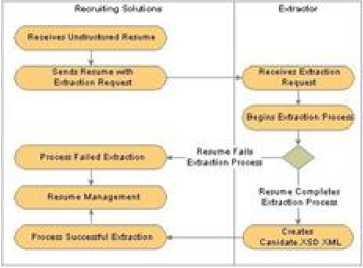
Fig.15. CV parsing Model
Above model in fig 15 having different components. The whole process consists of two parts. One is Recruiting Administrator and other is Recruiting solutions. Recruiting administrator gathers resumes in electronic or digitized manner for loading the resumes. Afterwards working of recruiting solutions starts. As the resume loading starts, extraction process also starts. This extraction process is controlled by Resume Management process. Resume management manages both successful extraction and unsuccessful extraction. It loads the resumes in the both cases. After successful loading of resumes, resume screening method is applied. Resume screening eliminates the candidates whose CV does not meet the job requirements.
-
A. Algorithm for CV Parser Model
Algorithm 1 Algorithm for CV Parser
Model Input: Client Request
-
1: JT ! f(N)
Allocated
-
2: ft = f8Ti; T2; Tn Jtg ifD^Ds; Dng
to
-
3: fc= Count of Tasks & fp=Process Of Tasks
-
4: Integrating tasks from ft
Output: Job Jy is complete.
-
VI. Implementation of Resume Parser Model
Resume parsing is extraction of CV or Resume in a free form document which is a structured information and the output generated will be in XML format. It will be suitable for storage and can be easily manipulated by user. Recruitment agencies work with CV/Resume Parsing tools to automate the storage and analysis of CV/Resume data. This saves recruiters hours of work by eliminating manual processing of each job application and CV they receive. The most common CV/Resume format is MS Word. Despite being easy for humans to read and understand, is quite difficult for a computer to interpret. Unlike our brains which gain or disseminate context through understanding the situation along with taking into consideration the words around it, to a computer a resume is just a long sequence of letters, numbers and punctuation. A CV parser is a program that can analyze a document, and extract from it the elements of what the writer actually meant to say. In the case of a CV the information is all about skills, work experience, education, contact details and achievements. Recruiters use resume parsing to create a far more convenient and efficient resume and application screening process. Resume parsing helps recruiters out in a huge way. This technology allows recruiters to electronically gather, store and organize the information contained in resumes or applications.
-
A. Extraction of Entity
R can interface with other languages like C, C++, Java. Writing code in R having advantage of its functional programming style and its many other libraries for data analysis. Indeed most of the techniques such as word and sentence tokenization, n-gram creation, and named entity recognition are easily performed in R. Below is the extraction of names of people and places from a sample document.
Client request is the request sent to namenode.J T is the total job and f(N) is the function in which J T is described & it also stands for the function of the assignment of job to the Name node. f T is the function where the tasks T 1 , T 2 , T n belongs to the total job J T .Function f c is the number of tasks counted. And f p is the process of tasks. Function f c and f p does the job of uploading CV either it is digitally or manually. Afterwards tasks are integrated from job f T .Then the job J T is complete.
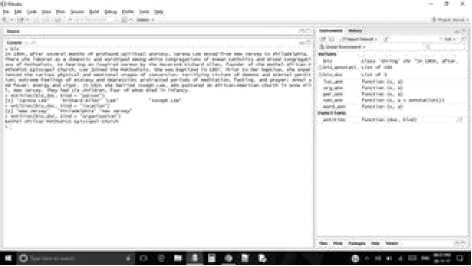
Fig.16. Extraction of person,location and organization from the text file in R
-
B. Annotation process
We need to create annotators for words and sentences. Annotators are created by functions which load the underlying Java libraries. These functions then mark the places in the string where words and sentences start and end. The annotation functions are themselves created by functions.
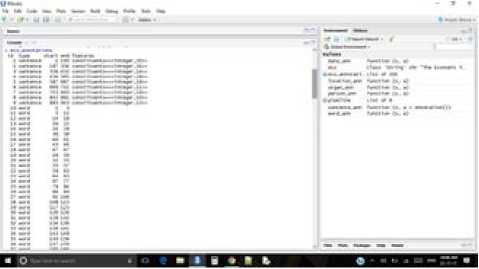
Fig.17. Sentences and word annotations
-
C. Tokenization
This is the very first step of text pre-processing [24] method. We have taken a text file in R and breaks into words and sentences. These are called tokenization, as we are breaking up the text into units of meaning, called tokens.
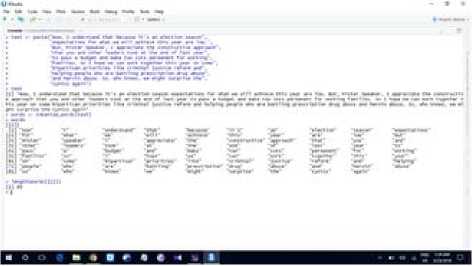
Fig.18. Tokenization of each word of sentences and its length
Now, we are taking one text as an input and tokenized it as a character vector, one-dimensional R object consisting only of elements represented as characters. It is possible to pair the output of the sentence tokenizer with the word tokenizer. If we pass the sentences split from the paragraph to the tokenize words function, each sentence gets treated as its own document. Apply this using the following line of code and see whether the output looks as you would have expected it, using the second line to print the object. We can also calculate the length of every sentence in the paragraph with one line of code.
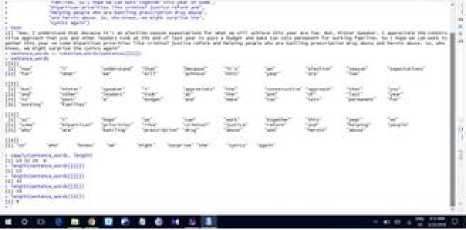
Fig.19. Detection of sentence boundaries
-
D. Counting frequent words
Frequent words or stop words can be counted. As example ”Hello” and ’hello’. Below is a graph for counting frequent word from a document.
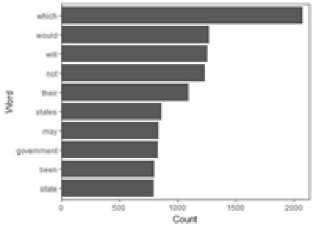
Fig.20. Frequent word count
-
E. Keyword searching through R
We are taking one resume as a input and search in base of different keywords.
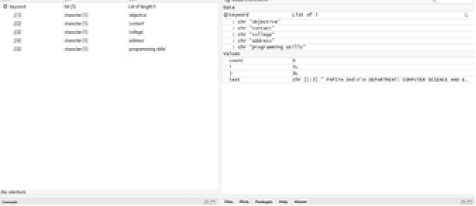
Fig.21. Keyword search
-
F. POS tagging
Part-of-speech tagging (POS tagging or PoS tagging or POST), also called grammatical tagging or word-category disambiguation, is the process of marking up a word in a text (corpus) as corresponding to a particular part of speech, based on both its definition and its contexti.e, its relationship with adjacent and related words in a phrase, sentence, or paragraph. A simplified form of this is commonly taught to school-age children, in the identification of words as nouns, verbs, adjectives, adverbs, etc.
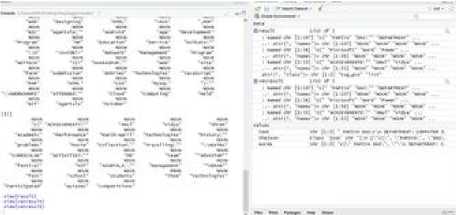
Fig.22. POS tagging through R
-
VII. Conclusion
The data sets of big data are large and complex in nature. In big data, text analysis has different aspects i.e entity extraction, concept extraction, article extraction, microformat extrac-tion etc. Now, everyone seeks jobs through online job por-tal by uploading resumes. All the resumes are not in struc-tured format. Some resumes are unstructured and also semi-structured. Our problem definition is based on designing an automated resume parser system, which will parse the uploaded resume according to the job profile. And it will transform the unstructured resumes into structured format. It will also main-tains a ranking system on the resumes. Ranking will depend on the basis of information extracted i.e according to technical skills, education etc. So, many software have been introduced to tackle such large databases.CV parsing is such a technique for collecting CV’s.CV parser supports multiple languages, Semantic mapping for skills, job boards, recruiter, ease of customization. Parsing with hire ability provides us accurate results. It’s technology increases the speed for ordering resume according to its types and formats. Its integration makes users API key for integration efforts. The parser operates using some rules which instructs the name and address. Recruiter com-panies use CV parser technique for selection of resumes. As resumes are in different formats and it has different types of data like structured and unstructured data, meta data etc. The proposed CV parser technique provides the entity extraction method from the uploaded CV’s. The future scope of work is to implement and provides a brief analysis in real time database to perform the analysis with the existing models.
Список литературы A CV parser model using entity extraction process and big data tools
- H. Joshi and G. Bamnote, “Distributed database: A survey,” Interna-tional Journal Of Computer Science And Applications, vol. 6, no. 2, 2013.
- R. Narasimhan and T. Bhuvaneshwari, “Big dataa brief study,” Int. J. Sci. Eng. Res, vol. 5, no. 9, pp. 350–353, 2014.
- A. Halavais and D. Lackaff, “An analysis of topical coverage of wikipedia,” Journal of Computer-Mediated Communication, vol. 13, no. 2, pp. 429–440, 2008.
- J. A. Stankovic, “Misconceptions about real-time computing: A serious problem for next-generation systems,” Computer, vol. 21, no. 10, pp. 10–19, 1988.
- M. Ferguson, “Architecting a big data platform for analytics,” A Whitepaper prepared for IBM, vol. 30, 2012.
- B. Mandal, S. Sethi, and R. K. Sahoo, “Architecture of efficient word processing using hadoop mapreduce for big data applications,” in Man and Machine Interfacing (MAMI), 2015 International Conference on. IEEE, 2015, pp. 1–6.
- S. Vijayarani and M. R. Janani, “Text mining: open source tokenization tools–an analysis,” Advanced Computational Intelligence, vol. 3, no. 1, pp. 37–47, 2016.
- R. Gaikwad Varsha, R. Patil Harshada, and V. B. Lahane, “Survey paper on pattern discovery text mining for document classification.”
- “Entity extraction— aylien,” http://aylien.com/text-api/ entity-extraction.
- “Named-entity recognition - wikipedia,” https://en.wikipedia.org/wiki/ Named-entity recognition.
- “Entity extraction: How does it work? - expert system,” www. expertsystem.com/entity-extraction-work/.
- “Named entity extraction — lexalytics,” https://www.lexalytics.com/ technology/entity-extraction.
- Botan, R. Derakhshan, N. Dindar, L. Haas, R. J. Miller, and N. Tatbul, “Secret: a model for analysis of the execution semantics of stream processing systems,” Proceedings of the VLDB Endowment, vol. 3, no. 1-2, pp. 232–243, 2010.
- T. Garcia and T. Wang, “Analysis of big data technologies and method-query large web public rdf datasets on amazon cloud using hadoop and open source parsers,” in Semantic Computing (ICSC), 2013 IEEE Seventh International Conference on. IEEE, 2013, pp. 244–251.
- Z. Jianqiang and G. Xiaolin, “Comparison research on text pre-processing methods on twitter sentiment analysis,” IEEE Access, vol. 5, pp. 2870–2879, 2017.
- D. C¸elik, A. Karakas, G. Bal, C. Gultunca,¨ A. Elc¸i, B. Buluz, and M. C. Alevli, “Towards an information extraction system based on ontology to match resumes and jobs,” in Computer Software and Applications Conference Workshops (COMPSACW), 2013 IEEE 37th Annual. IEEE, 2013, pp. 333–338.
- M. Jose, P. S. Kurian, and V. Biju, “Progression analysis of students in a higher education institution using big data open source predictive modeling tool,” in Big Data and Smart City (ICBDSC), 2016 3rd MEC International Conference on. IEEE, 2016, pp. 1–5.
- F. Javed, Q. Luo, M. McNair, F. Jacob, M. Zhao, and T. S. Kang, “Carotene: A job title classification system for the online recruitment domain,” in Big Data Computing Service and Applications (BigDataSer-vice), 2015 IEEE First International Conference on. IEEE, 2015, pp. 286–293.
- W. Hua, Z. Wang, H. Wang, K. Zheng, and X. Zhou, “Understand short texts by harvesting and analyzing semantic knowledge,” IEEE transactions on Knowledge and data Engineering, vol. 29, no. 3, pp. 499–512, 2017.
- “Intelligent hiring with resume parser and ranking using natural ...” https: //www.ijircce.com/upload/2016/april/218 Intelligent.pdf.
- P. Shivratri, P. Kshirsagar, R. Mishra, R. Damania, and N. Prabhu, “Resume parsing and standardization,” 2015.
- Z. Chuang, W. Ming, L. C. Guang, X. Bo, and L. Zhi-qing, “Resume parser: Semi-structured chinese document analysis,” IEEE, pp. 12–16, 2009.
- Ulusoy, “Research issues in real-time database systems: survey paper,” Information Sciences, vol. 87, no. 1-3, pp. 123–151, 1995.
- A. M. Jadhav and D. P. Gadekar, “A survey on text mining and its techniques,” International Journal of Science and Research (IJSR), vol. 3, no. 11, 2014.

